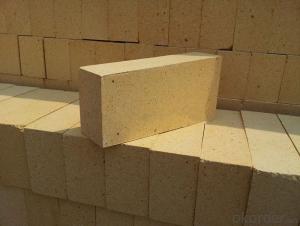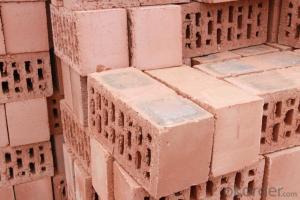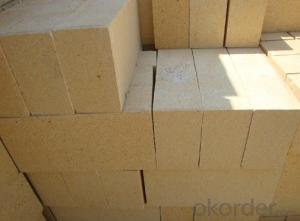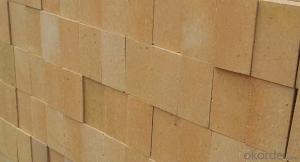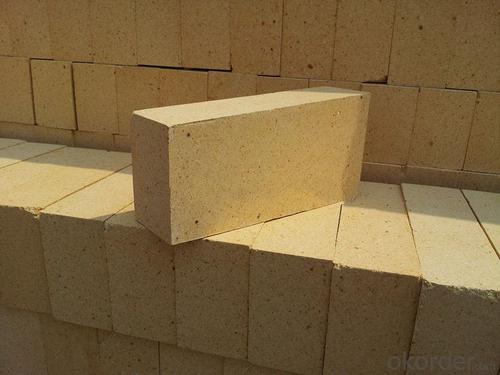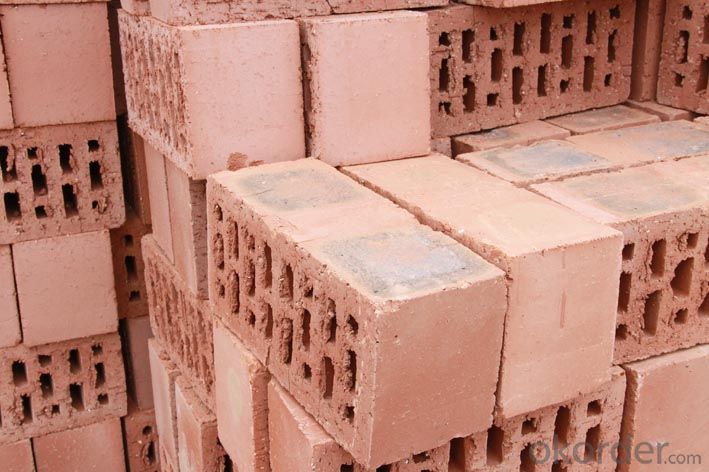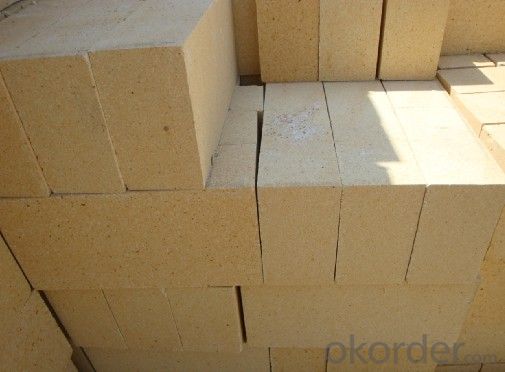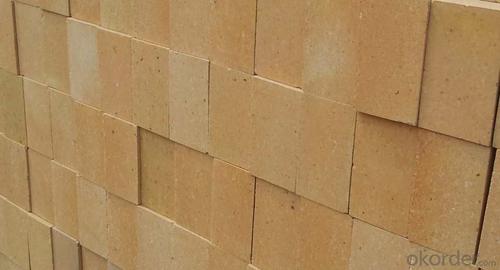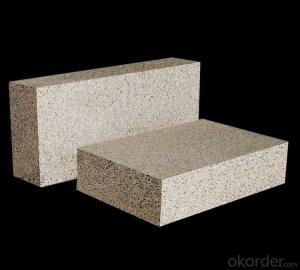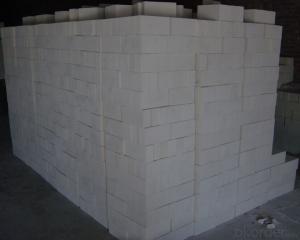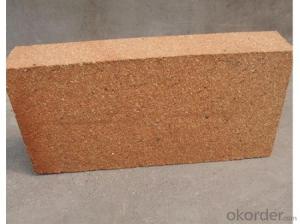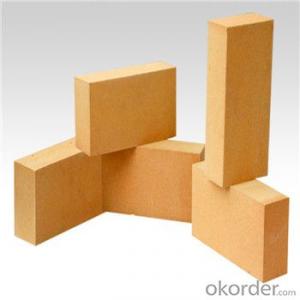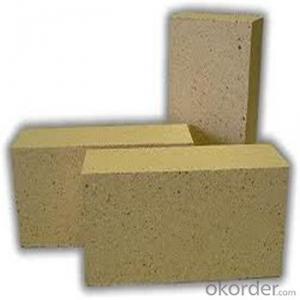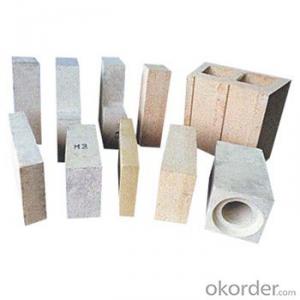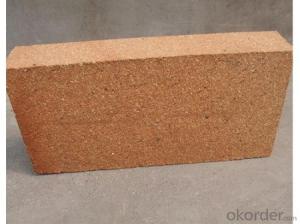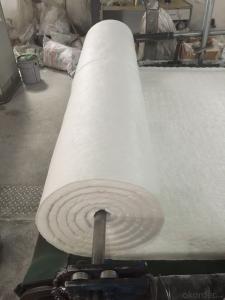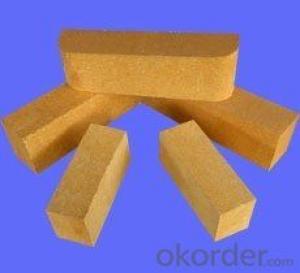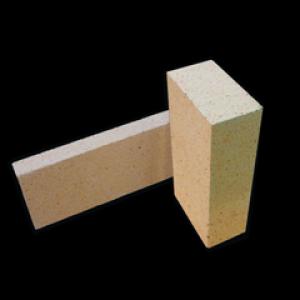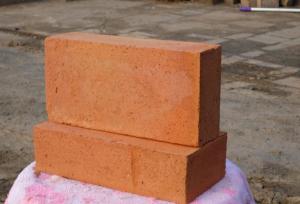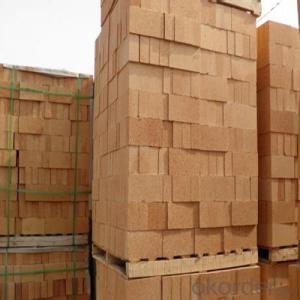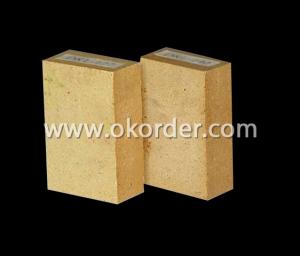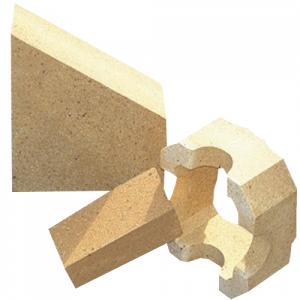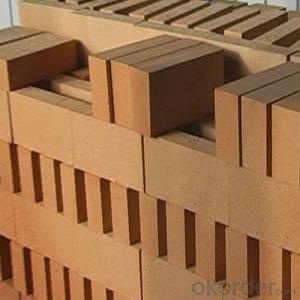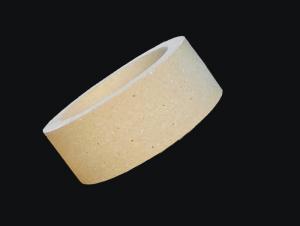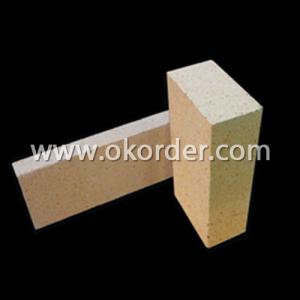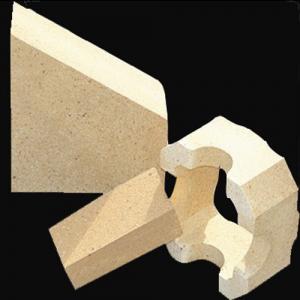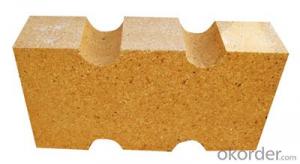Fireclay Brick - Low Porosity
- Loading Port:
- China main port
- Payment Terms:
- TT OR LC
- Min Order Qty:
- 1 m.t.
- Supply Capability:
- 1000 m.t./month
OKorder Service Pledge
OKorder Financial Service
You Might Also Like
Description:
Refractory brick is a block of refractory ceramic material used in lining furnaces, kilns, fireboxes, and fireplaces.
We provide high quality Refractory Fire Bricks that are used on wide range in the various industries like Cement, Glass and Steel. Refractory Fire Bricks are provided as per the quantity and specifications required by the customers. We provide an extensive range of Refractory Fire Bricks at reasonable prices that depend upon the quantity ordered.
Fire Clay Brick Features:
1. Good thermal stability, low thermal conductivity, good insulation performance.
2. Low bulk density, good integrity, high mechanical strength.
3. Good thermal shock stability, good resistance to abrasion and corrosion.
4. Good volume stability at high temperature.
Fire Clay Brick Application:
1. Widely used in various kilns due to its cheapness and general tray package
2. All parts of furnace lining for middle and small capacity blast furnace.
3. Low temperature parts of waste incinerators and glass melting furnaces, etc.
4. Widely used in metallurgy, construction (glass and cement), chemical industry, electric power and machine building.
Specifications
1. Fire Caly brick Manufacturer
2. ISO 9001 certificate
3. Credible Quality
4. Reasonable price
5. Delivery in time
Technical data:
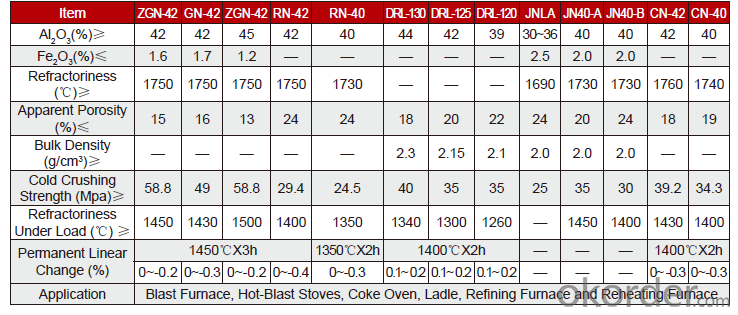
Q1 What’s the transport method?
A1 FCL delivery goods with wooden pallet or wooden case by sea; If LCL delivery, must with wooden case; Sometimes need open top, flat rack or bulk cargo.
Q2 What’s the required payment term?
A2 Generally 30% TT as the prepayment, 70% TT before delivery. If need, 100% Irrevocable Letter of Credit or negotiation.
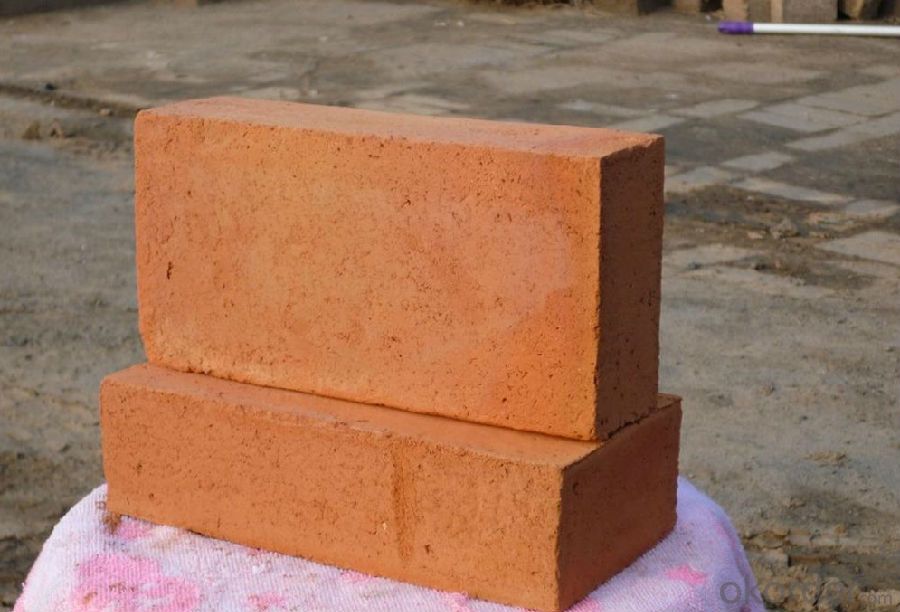
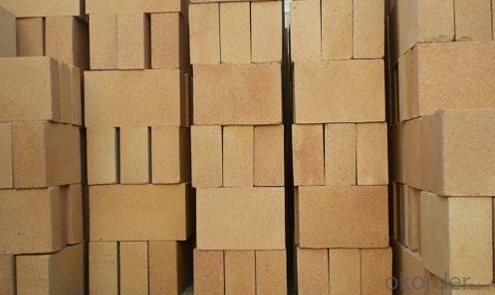
- Q: does furnace use refractory cement to make refractory bricks?
- consistence Mainly concern about the strength, generally masonry mortar does not consider the degree of fire resistance
- Q: Which thermal stability of clay bricks and high alumina bricks is good?
- Thermal shock stability is much better than clay brick.
- Q: What to do if refractory bricks saltpeter when they are used outdoor
- Efflorescence is usually dialysised from brickwork joints, dealing with the gap is ok These white substaince inside the pan tile: Cement efflorescence efflorescence is wow cake section from light leather intestinal common disease inumiya Hua building surface, according to their different causes and manifestations, there is pan cream, white, whitening, cream, on the walls and decorative surface erosion and other names, is the change of soluble saline alkali soil, adobe, brick, cement, mortar, concrete, masonry, ceramic tile, paint and other building materials with temperature, humidity and other external environment, in a water absorption, water transfer, water evaporation process with physical and chemical changes of the original building material damage disease phenomenon, erosion degree also has the very big difference there is a common, get damp, foaming, powder, drum, hollowing, cracking, spalling, mildew and crystallization phenomenon. Cement efflorescence may have some relationship with the quality of the cement, sand, water, air, temperature, humidity, it is a common fault in building. Use cement to do the pebble shape, it also prones to the above problems: A layer of white stuff on the surface. Terms of settlement: Scrape the dust in brickwork joint, pointing again. Use special pointing agents, more resistant to corrosion, not easy to efflorescence.
- Q: What building materials can take the place of clay bricks?
- Are aging fast, can greatly save the time, from the practical results, the red brick walls every day only skilled workers built about 2.5 cubic meters, while the foam concrete block can be built about 6 cubic meters per day, calculated by 50 yuan per person per day, only a fee per cubic wall can save nearly 16 yuan.
- Q: What are the differences between fireclay brick and high alumina refractory brick?
- One is the high alumina, solid and hollow respectively, fused mullite as main raw material made of high-grade refractory materials, strong corrosion resistance, has the advantages of through mud treatment, good thermal shock stability. Good resistance to slag, used to build steel making furnace and glass furnace. High alumina brick is a kind of refractory material. Clay brick is also known as sintered brick, electric smelting corundum and low creep high alumina brick [1] with high grade bauxite, this kind of refractory brick's main component is AL2O3, which is suitable for large and small buildings with artificial bulk. High thermal stability. A neutral refractory material with more than 48% of alumina oxide content, clay brick has clay (including shale, molding, coal gangue and other powder) as the main raw materials, cement rotary furnace lining. The product has a small high-temperature creep, one is clay. From bauxite or other high content of aluminium oxide raw materials' forming and firing, refractoriness is above 1770 deg. High R.U.L and medium-sized hot-blast furnace is different firstly in the material, forming from drying and roasting
- Q: How many degrees of refractory brick if its surface turns red, how to test the temperature of refractory brick after it is burnt to red.
- If the raw materials are different, then the redness is different under different temperatures.
- Q: What is the size of mechanism brick and general refractory brick?
- The ordinary refractory brick is 230mm long, 53mm thick; red brick is 240mm long, 115mm wide, 65mm thick,
- Q: What is the difference between fused brick and clay brick?
- Artificial small bulk for building. Also called sintered brick. Clay to clay (including shale, coal gangue powder) as the main raw material, through mud processing, molding, drying and roasting and. Chinese in the spring and Autumn period has created a square and brick, Qin and Han Dynasties brick technology and production scale, quality and variety have significant development, known as "Qin Zhuanhan tile". Ordinary brick size of 240 mm * 115 mm * 53 mm, according to compressive strength (Newton / square millimeter, N / mm2) size is divided into MU30, MU25, MU20, MU15, MU10, MU7.5, these intensity levels.
- Q: What are the factors that determine the weight of the refractory bricks?
- (5) Under high temperature, the volume is stable, the inner part of brick will produce unrecoverable volume shrinkage or expansion because of the internal transformation. Therefore, masonry inner will produce stress to make the material break and peel off, and the weight of a ton of bricks is determined by the bulk density and quantity, how much is the weight of refractory bricks, refractory bricks should have the ability to resist the damage, the weight of a piece of brick is determined by the bulk density: Refractory bricks are used under high temperature for a long term: Refractory bricks in the use of the process. Cooltech refractory brick used in various high-temperature equipment: The temperature of some parts of metallurgical furnace and other industrial furnace is uneven due to rapid temperature change during operation. (3) good thermal stability: Refractory bricks should not only have a high fusion temperature, no softening deformation and collapse, causing damage to the masonry. (4) strong resistance to slag: Modern metallurgy and the other industrial furnace heating temperature is generally between l000~1800. Refractory bricks should have the performance that is not easy to melt under high temperature. Therefore. Therefore, it is subject to high temperature conditions of physical and chemical corrosion and mechanical damage, the refractory brick must have the ability to resist high temperature chemical corrosion, the volume of refractory brick is required to be stable under high temperature. (2) High-temperature structural strength, chemical corrosion of metal, but also should have been built in the stove brickwork load or other mechanical vibration, often has the high temperature slag, so the refractory materials performance should meet the following requirements: (1) high refractoriness
- Q: Can refractory bricks be used to build a house?
- Refractory brick can be used to build houses, but you can not use ordinary cement to build, the cost is 3 times than that of ordinary brick.
Send your message to us
Fireclay Brick - Low Porosity
- Loading Port:
- China main port
- Payment Terms:
- TT OR LC
- Min Order Qty:
- 1 m.t.
- Supply Capability:
- 1000 m.t./month
OKorder Service Pledge
OKorder Financial Service
Similar products
Hot products
Hot Searches
Related keywords
